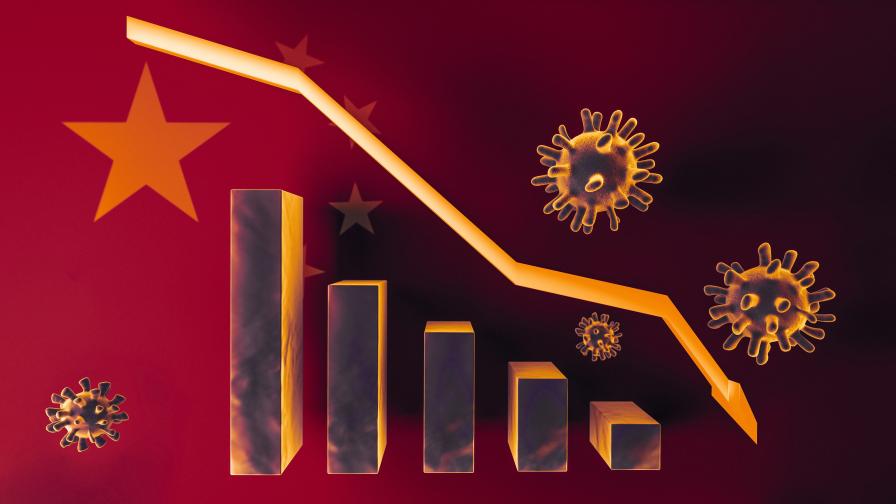COVID-19 Update: China Tries to Restart This Week, But Global Economies Blink as Containment Appears Unlikely
Now three months since the first suspected community spread of COVID-19 in Wuhan, China, and more than a month since initial quarantines were enacted, governments around the world are all but giving up on containment and preparing for global community spread and the economic backlash that is almost inevitable amid an already sputtering global economy.
Here’s a recap of what we know as of Feb. 24:
 Community spread is confirmed in four of the world’s top-12 economies: China, Japan, Italy, and South Korea, which contribute about 27% of global GDP, according to IMF. Japan’s economic growth was projected to be a paltry 0.3% before the virus.
Community spread is confirmed in four of the world’s top-12 economies: China, Japan, Italy, and South Korea, which contribute about 27% of global GDP, according to IMF. Japan’s economic growth was projected to be a paltry 0.3% before the virus.- Germany’s economy had begun stumbling before coronavirus on a weak industrial sector, which includes chemicals. The world’s fourth-largest economy had been clinging to a 1% growth rate for the past few quarters, and analysts are not yet prepared to predict how the coronavirus will affect the country’s economy.
- The International Monetary Fund told world financial leaders at the G20 meeting in Riyadh over the weekend that coronavirus is a real risk to the global economy and predicted that the epidemic would shave 0.1% off global growth. Global growth was poised for an uptick of 3.3% growth compared to 2.9% last year.
- Infections have been reported on five continents, although only one case exists in Africa (Egypt), and Australia (22 cases) is the only country affected in Oceania.
- Although 99% of cases (totaling 79,331 on Feb. 24, according to WHO) occur in China, the recent unexpected outbreaks in Italy, Iran, and South Korea have health officials worried that global spread is probable, and national governments should be prepared for community transmission elsewhere.
- Stock markets tumbled Feb. 24 at the looming reality of the economic impact outweighed the investor optimism that had propped up markets for the past couple months. Major indices around the world lost between 2% and 3.5%, emasculating much of the year’s gains.
- Goldman Sachs Chief U.S. Economist Jan Hatzius hedged U.S. growth 0.2% Feb. 24 with the implication that supply chain disruptions as a result of halted production in China could persist beyond Q2. The U.S. government has begun discussions to allocate emergency and research funds to fight the virus.
What It Means for Crop Protection
Several sources inside and outside of China say factory production for agrochemicals has maintained about 50% production capacity through the Chinese New Year holiday, and production has stayed constant. Large producers often keep a skeleton crew through the holiday so companies can meet demand. These workers who stayed to staff factories during the Chinese New Year effectually were already quarantined in or near factories and have been able to staff those factories during the past two months.
However, while production has been trudging along, goods cannot be brought to market because transportation systems have been crippled by quarantines that have prohibited the transport of non-essential items. Inventories are piling up at ports, workers are slow to return to work at ports and trucking companies due to mandatory 14-day quarantines before they can pass medical clearance, and the backlog of merchandise entering and leaving China means that products cannot move from factors to ports for shipment.
This dynamic throughout China has halted the supply of raw materials to factories to make technical-grade products, and technical-grade products cannot travel to formulation facilities. The result will be inevitable supply disruptions becoming more significant in Q2, and many companies are bracing for disruptions to continue for much of 2020.
“Raw materials and/or finished products cannot be shipped from China, and this means companies cannot manufacture or distribute the products,” says Dr. Piyatida (Tung) Pukclai, Business Development, Knoell Thailand. “Even if China managed to export, the countries of destination are putting strict quarantines on the materials, which means more delay of the supply cycles.”
In the short term, spot-traders could manipulate prices to take advantage of market conditions. But more questions remain for long-term access amid limited logistical capacity and the possible supply shortages later this year as a result of the domino effect of transportation stoppages. Smaller buyers might have trouble securing typical orders.
“Longer term, China suppliers will guarantee the supply to key accounts like multinationals as priority,” says David Li, Business Manager for Beijing-based SPM Biosciences. “It [access] will depend on the percentage of business a global distributor contributes to the sales of Chinese suppliers.”
Other analysts say that while inventories might be sufficient to meet demands of current contracts, longer-term disruptions could trigger force majeure clauses to insulate suppliers from future uncertainty. That could come at a higher price for buyers, even under existing contracts.
“The Contract is one thing, but if one wants products, one needs to pay more. Otherwise, suppliers just invoke the force majeure clause, and buyers get no goods. Goods go there where the prices and returns are higher —naturally,” says CS Liew, President of Pacific AgriScience. “Products produced over the Chines New Year period can’t be priced the same as before CNY. The cost of production would be higher in view of the need to pay the workers more to work over the holiday period. And, with the current shortage arising from the delays in resuming production, there is no way price would not rise — production economics dictate a rise, and opportunistically, it also needs to rise.”
Although China has shown almost a week of fewer cases, unexpected spread in other countries could further complicate logistics and further hamper confidence in a world economic system that continues to deglobalize amid trade tensions, populism, and disease threats, which unlike national governments, observe no borders.






